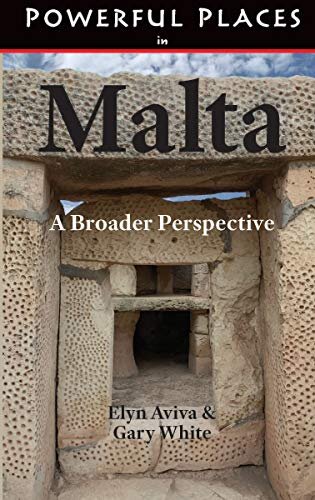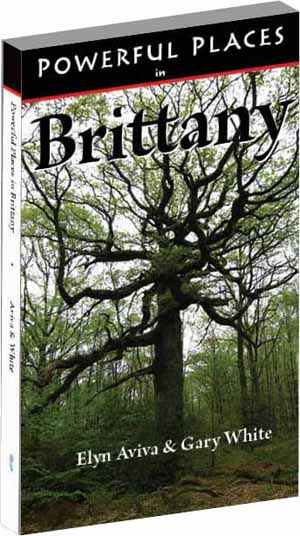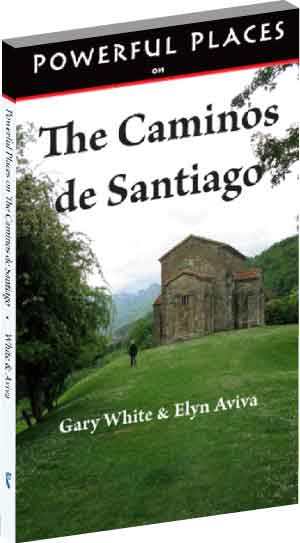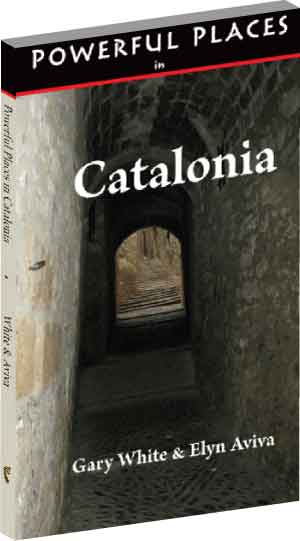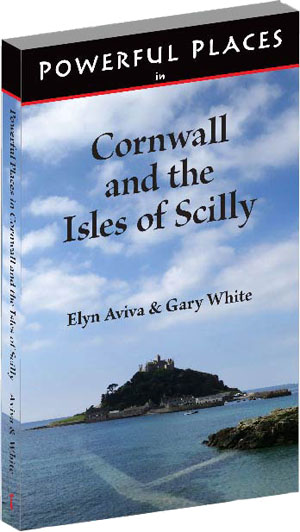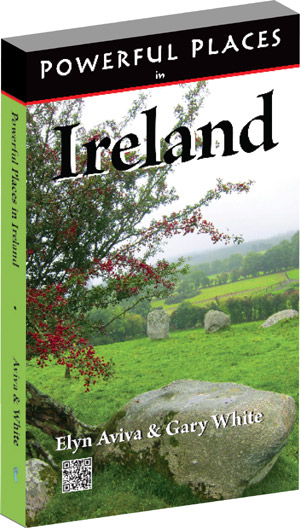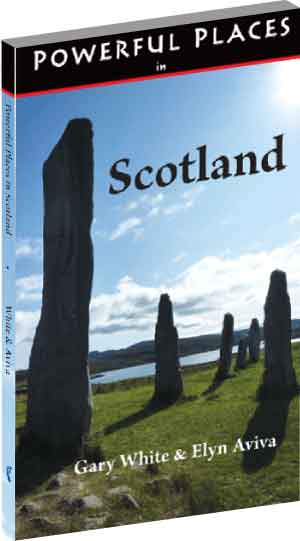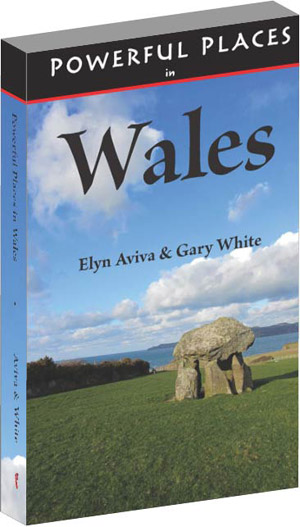As co-authors and publishers of the guidebook series Powerful Places, Gary and I are often asked: “What is a ‘powerful place’?” Excellent question! One could say that what makes a place powerful is, like beauty, in the eye of the beholder, but we believe there is something less subjective going on.
Over the years, we have traveled to a number of unusual places, drawn by curiosity, lured by possibility. Gradually we realized that although many of these locations were interesting, some of them were much more—they were powerful. These were places where we felt something out of the ordinary. Perhaps we felt surprisingly peaceful, as if we have just walked into a quiet church. Or maybe we felt unusually energized, as if we have entered a football stadium filled with cheering hordes. On occasion we felt a tingle up the spine or an almost overwhelming sense of foreboding. Sometimes we had a strong intimation that we had entered a “thin place” where the veil between this world and the “other realm” was more easily parted. The sites were as varied as grand cathedrals, dense forests, megalithic stone circles, holy wells, mountain outcrops, tiny chapels, and darkened caves.
Soon we were making pilgrimages to powerful sacred sites. We began paying attention to changes in our sensory experiences, and we explored what might give rise to these sensations or altered awareness. We asked questions. For example, what happened historically at that location? Was there great suffering and death, as at Auschwitz-Birkenau concentration camp? Did someone see a divine being, such as the reported apparition of the Virgin Mary at Lourdes, France? Were ceremonies conducted there over centuries, leaving a kind of energetic “residue” that can still be felt, as at Stonehenge, Machu Picchu, and the ancient temples on Malta? In some cases, a sacred site has been taken over by a subsequent religion: St Brigid’s Cathedral in Kildare, Ireland, was built over a pre-Christian Fire Temple dedicated to the Celtic goddess Brigit. Did the location, like Oweynagat Cave in Co. Roscommon, Ireland, or Cadair Idris in Snowdonia National Park, Wales, have mythic associations? Were there legends about the place—for example, the stories of Merlin and the fairy Vivian that swirl like mist through the Forest of Brocéliande in Brittany?
What else might give the place its power?
Was it built, like Chartres Cathedral and the Egyptian pyramids, using particular geometrical relationships, shapes, and sacred numbers? The ancient Master Builders knew how to use geometrical ratios (for example, the Golden Ratio), shapes (circles, triangles, pentacles, six-pointed stars), and the symbolic associations of numbers (e.g., “3” for the Trinity or three-fold goddess, “4” for Earth), to make the construction a truly powerful place.
Are they linked to solar, lunar, or stellar events? Temples and megalithic sites were often oriented to emphasize certain seasonal events, including the spring and summer equinoxes. Newgrange Megalithic Passage Tomb, Ireland, and the Calanais Standing Stones, Isle of Lewis, Scotland, are oriented in a particular direction that links them to solar and lunar cycles.
Are there telluric (earth-based) energies, including underground geological fault lines, water lines, hidden springs, and energy vortices? These can be measured by geomancers like Gary, using dowsing rods and pendulums, and by “earth energies” experts using sophisticated sensing equipment.
In powerful places, we experience an interaction between the energies of the land itself, the human activities at that location (offerings, ceremonies, constructions such as stone circles or temples), and our own openness to experience what is happening when we are there. One person’s powerful place may be another’s “ho-hum” experience—or someone else’s place to avoid. Why is this? Because we are all individuals. Just as one person may thrive on a steak dinner, Jane Austen novels, and solitude, someone else may flourish on vegetarian fare, detective stories, and discotheques.
We have noticed that our experiences of a whether a place is powerful have differed on subsequent visits to the same site. Sometimes the explanation is simple: a large, noisy tour group has just trampled through St Davids Cathedral, Pembrokeshire, Wales, oblivious to what was there. Or someone had conducted a wedding ceremony at the Beltany Stone Circle in Co. Wicklow, Ireland, the night before we visited the site. At other times, the answer is not so obvious. Perhaps it has something to do with being at the site at a different time of year or during a different phase of the moon—or in a different state of mind. Experiences can never be repeated, whether it’s your first bite into a chocolate gelato cone on a sunny day in Rome, or your first kiss. This is equally true of repeat visits to powerful places and sacred sites.
Why visit a powerful place?
To get a thrill? To have an energy “hit”? Although there’s nothing wrong with those motivations, we hope you will find other, deeper reasons to experience powerful places. For Elyn, visiting a powerful place is a reminder that there is more to reality than she normally encounters—that the universe is a much grander place than she can even imagine. Sacred sites reaffirm for her the mystery of creation, that “everything is, but nobody knows what it really is,” to quote the integral spirituality teacher, Terry Patten.
For Gary, visiting powerful places is a way to remember that we are fundamentally and unavoidably connected to this amazing, surprising, life-giving planet. He believes that if more people experienced the power of places, they would treat the Earth with greater respect. Ferran Blasco Aguasca, a friend, acupuncturist, and earth-energies expert, tells us that “The art of the Master Builders is a spiritual art: it enables us to experience that sacredness that we are, that infinite space of bliss.”
What’s the difference between a powerful place and a sacred site?
There is a great deal of overlap: A sacred site can be powerful, and a powerful place can be sacred. However, the term “sacred” is usually associated with dedication to a deity or to some religious purpose. Rosslyn Chapel, just outside of Edinburgh, Scotland, is both a powerful place and a sacred site. It is powerful because of the sacred geometry used in its construction and because of the quantity of mysterious carvings that adorn its walls. It is sacred because it was a consecrated religious building. Forested Roslin Glen, just down the hill from the chapel, is a powerful place but not a sacred site—unless you worship in a grove of trees or consider Nature itself to be sacred. If you do, Roslin Glen, like Rosslyn Chapel, are both a powerful place and a sacred site.
This article is the first of four. If you want to know how to experience a powerful place and about kinds of powerful places, our upcoming articles will give you answers.

